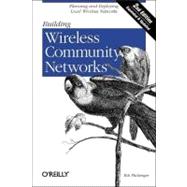
Note: Supplemental materials are not guaranteed with Rental or Used book purchases.
Purchase Benefits
What is included with this book?
| Preface | p. ix |
| Wireless Community Networks | p. 1 |
| Why Now? | p. 2 |
| The WISP Approach | p. 4 |
| The Cooperative Approach | p. 6 |
| About This Book | p. 8 |
| Defining Project Scope | p. 9 |
| The Standards | p. 9 |
| Hardware Requirements | p. 13 |
| Site Survey | p. 14 |
| 802.11b Channels and Interference | p. 15 |
| Topographical Mapping 101 | p. 17 |
| Network Layout | p. 19 |
| Layer 1 (Physical) Connectivity | p. 19 |
| Wired Wireless | p. 23 |
| Vital Services | p. 25 |
| Security Considerations | p. 30 |
| Summary | p. 38 |
| Using Access Points | p. 39 |
| Access Point Caveats | p. 41 |
| The Apple AirPort Base Station | p. 42 |
| Access Point Management Software | p. 43 |
| Local LAN Access | p. 45 |
| Configuring Dialup | p. 45 |
| NAT and DHCP | p. 45 |
| Bridging | p. 46 |
| WEP, MAC Filtering, and Closed Networks | p. 48 |
| Roaming | p. 49 |
| Channel Spacing | p. 49 |
| Host-Based Networking | p. 51 |
| Anatomy of a Wireless Gateway | p. 52 |
| Long-Range Networking | p. 69 |
| Topo Maps 102: Geographical Diversity | p. 70 |
| Antenna Characteristics and Placement | p. 74 |
| Other Applications | p. 93 |
| Software | p. 93 |
| Point-to-Point Links | p. 95 |
| Point-to-Multipoint Links | p. 97 |
| Home-Brew Antennas | p. 98 |
| Redundant Links | p. 106 |
| Repeaters | p. 107 |
| Security Concerns | p. 111 |
| NoCatAuth Captive Portal | p. 113 |
| Fun with IP | p. 116 |
| In Closing | p. 120 |
| Radio Free Planet | p. 121 |
| Universal Wireless | p. 125 |
| The Future | p. 128 |
| Radio Free Sebastopol | p. 129 |
| OSCON 2000 | p. 129 |
| The Campus | p. 130 |
| Coffee, Coffee, Coffee | p. 131 |
| Online From Home, No Strings Attached | p. 131 |
| Seattle Wireless | p. 132 |
| NoCat | p. 133 |
| The Community Takes Notice | p. 134 |
| The Portland Summit | p. 135 |
| And So On | p. 136 |
| Regulations Affecting 802.11 Deployment | p. 137 |
| Path Loss Calculations | p. 157 |
| Simple Scheme Management | p. 158 |
| Index | p. 161 |
| Table of Contents provided by Ingram. All Rights Reserved. |
The New copy of this book will include any supplemental materials advertised. Please check the title of the book to determine if it should include any access cards, study guides, lab manuals, CDs, etc.
The Used, Rental and eBook copies of this book are not guaranteed to include any supplemental materials. Typically, only the book itself is included. This is true even if the title states it includes any access cards, study guides, lab manuals, CDs, etc.